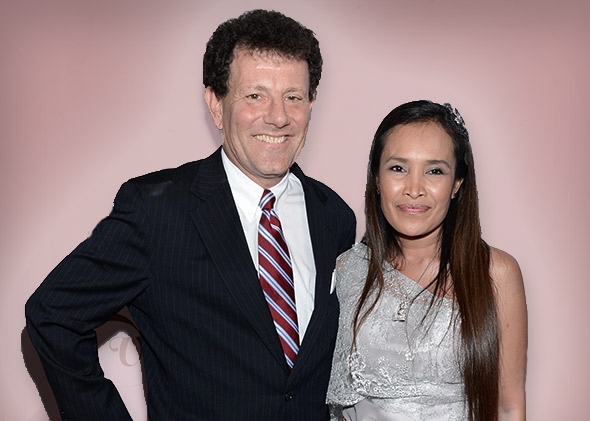Cameron Keys: Unveiling the Truth Behind the Videos
Explore the career of Cameron Keys in adult entertainment, his rise to fame, and the impact he has made in the industry. Discover insights into his professional journey.
Cameron Keys – Unveiling the Truth Behind the Videos
Investigate the clips meticulously. The initial step in comprehending the reality behind the footage involves a thorough analysis. Look for visual and audio anomalies, scrutinize the metadata, and examine the context in which the videos were posted. Cross-reference with established facts to separate authentic material from fabrications.
Engage with online communities. Platforms like Reddit or specific forums often harbor enthusiasts who dedicate time to dissecting such content. Their insights can offer alternative perspectives or even expose hidden details. Join discussions, ask targeted questions, and share your findings to foster a collaborative investigation environment.
Seek out expert opinions. Professionals in video forensics, journalism, or relevant fields can provide authoritative analysis. Their expertise can help confirm or refute claims made within the videos. Consider reaching out to digital forensics experts for a technical breakdown of the videos’ authenticity.
Understand the motivation. Delve into why these videos were created. Was it for fame, to mislead, or perhaps for entertainment? Identifying the intent can guide you through the maze of information and help determine the credibility of the content.
Document your findings. Keep a detailed log of your research process, including sources, expert comments, and your own observations. This documentation not only aids in forming a solid conclusion but also serves as a reference for others exploring the same topic.
Analyzing the Authenticity of Cameron Keys’ Content
Consider these steps to verify the genuineness of Keys’ video posts:
Metadata Examination: Inspect video metadata for clues on editing, creation date, and device specifics. Discrepancies could indicate manipulation.
Source Verification: Trace the video’s origin through reverse image search or URL analysis. Authentic content usually has a verifiable source trail.
Consistency Check: Look for continuity in Keys’ video series. Significant deviations or anomalies might suggest alterations or fabrications.
Expert Opinions: Seek insights from video forensics experts or tech analysts. Their specialized knowledge can reveal subtle signs of digital tampering.
Community Feedback: Monitor online communities for discussions on Keys’ videos. Collective scrutiny often uncovers inconsistencies or confirms authenticity.
Technical Analysis: Use tools to analyze video for signs of deepfakes, such as unnatural eye movements, lip-sync issues, or audio-visual discrepancies.
These methods provide a structured approach to assess the veracity of Keys’ content, ensuring viewers are not misled by potentially deceptive footage.
Exploring the Impact of Cameron Keys’ Videos on Public Perception
Analyze viewer engagement metrics to gauge the influence of Key’s video content. High view counts, like ratios, and comment activity provide tangible evidence of public fascination. These metrics often correlate with how much a video sways public opinion or awareness.
Examine audience demographics to understand who is watching. Key’s videos tend to attract a diverse audience, from conspiracy theorists to skeptics, influencing a broad spectrum of viewers. Tailoring content to these demographics can enhance viewer impact.
Consider shareability. Videos that provoke thought or strong emotions are frequently shared, increasing their reach and impact. Key’s approach often involves controversial topics, which naturally encourages sharing among viewers.
Evaluate media coverage. When Key’s videos receive attention from mainstream media, this amplifies their influence. Tracking media mentions can reveal how these videos shape public discourse.
Assess community response. Look for forums, social media discussions, and reactions to gauge sentiment. The creation of fan communities or the emergence of counter-narratives indicates significant viewer engagement.
Study long-term effects on public perception. Key’s videos can alter long-held beliefs or introduce new viewpoints, which might not be immediately apparent. Longitudinal studies help understand these shifts in public opinion over time.
Investigate collaborations and endorsements. When other influencers or notable figures engage with Key’s content, this can lend credibility or controversy, further affecting public perception.
Strategies for Critical Viewing and Fact-Checking
Check Source Credibility: Prioritize information from reputable news outlets and official websites. Use tools like NewsGuard or Media Bias/Fact Check to evaluate media sources.
Analyze Video Content: Look for signs of editing, such as abrupt cuts or changes in lighting, which might indicate manipulation. Watch for out-of-context clips or misleading overlays.
Verify Statements: Cross-reference claims with multiple sources. Utilize fact-checking websites like FactCheck.org or Snopes to confirm or debunk specific statements.
Understand Context: Tubev ES Investigate the background of the video. Who produced it? What’s the purpose? Context often provides clues about potential bias or intent to mislead.
Seek Out Expert Opinions: Consult experts in relevant fields. Academic institutions or recognized professionals often provide insights that are less influenced by sensationalism.
Use Digital Forensics: Tools like InVID or FotoForensics help in detecting digital alterations in videos or images, ensuring authenticity.
Engage with Skepticism: Approach content with a healthy skepticism, especially when it aligns too perfectly with your beliefs. This mindset encourages thorough investigation.
Document and Share Findings: Record your research process and results. Sharing well-documented findings with others aids in collective understanding and prevents misinformation spread.




